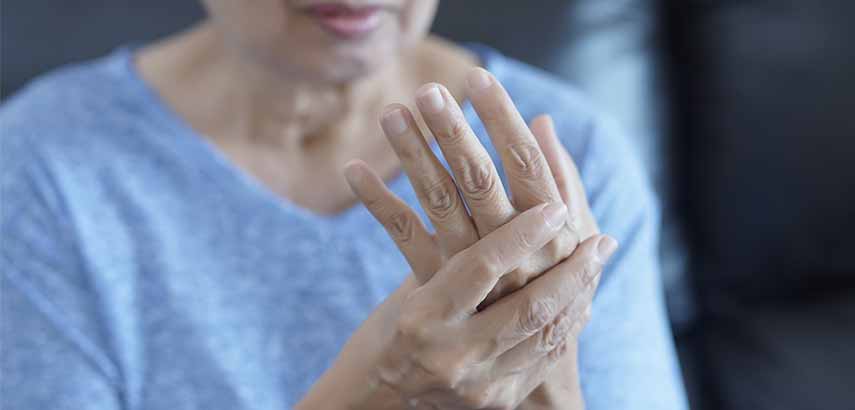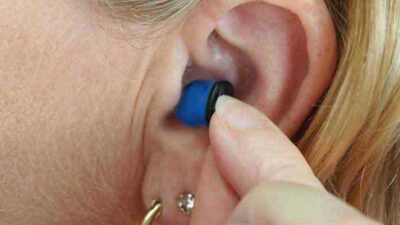Osteoarthritis (OA) is a debilitating condition that affects more than 32 million adults in the U.S. It is a chronic joint ailment often characterized by pain, stiffness and swelling. The condition is also known by other names, such as:
- Degenerative arthritis
- Degenerative joint disease
- Wear-and-tear arthritis
Osteoarthritis is not just a physically painful condition. It affects a patient’s mobility and can interfere with their ability to perform routine tasks, such as climbing the stairs or unlocking a door. That, in turn, can have a prominent impact on their mental health and emotional wellbeing.
While a cure for OA is not available, patients can manage their symptoms with specific lifestyle changes. Also, alternative treatments, such as acupuncture and hydrotherapy, can provide symptomatic relief.
This blog will discuss a few useful lifestyle changes and alternative therapies to cope with osteoarthritis. But let us first delve deeper into the condition to understand its causes and symptoms.
What Causes Osteoarthritis?
In simple terms, osteoarthritis is caused by the breakdown of the protective cartilage tissue in joints. Typically, joints in the human body, such as hips and knees, have enough cartilage to prevent friction at the ends of bones.
However, when the cartilage disintegrates, it causes friction between the bones of a joint, leading to pain, swelling, and stiffness.
The exact reason behind cartilage breakdown in OA is not known. However, certain habits and factors increase the risk of OA. These include:
- Accidents or joint injuries that involve a ligament tear or dislocated joint
- A family history of osteoarthritis
- Repetitive stress on a joint due to rigorous physical activity
Additionally, individuals who are overweight or obese are more likely to develop osteoarthritis. Also, they have higher chances of experiencing more severe OA symptoms once they are diagnosed with the ailment.
It is worth mentioning here that the development of OA is linked with age. Older people are more likely than youngsters to have the ailment. However, young people can also experience OA symptoms due to joint injury and other factors.
Moreover, OA is a degenerative disease – it gets worse as a patient grows older. While the onset of cartilage breakdown might start at an early age, it may not immediately manifest in the form of joint pain and tenderness.
OA commonly affects the knees, hips and hands (including fingertips). Women have a higher chance of developing osteoarthritis than men.
Osteoarthritis vs. Rheumatoid Arthritis
Many of the symptoms of OA and rheumatoid arthritis overlap. However, it is important to understand that rheumatoid arthritis is an autoimmune disorder. Unlike osteoarthritis, it is not caused by cartilage breakdown in the joints.
Rheumatoid arthritis is caused when the immune system mistakenly attacks the synovium (the soft lining around a joint), causing it to disintegrate. This, in turn, leads to a buildup of fluid in the joints, thus resulting in pain and inflammation. You can learn more about rheumatoid arthritis here.
Other Conditions Related to Osteoarthritis
While OA is most common in the knees, hips, and hands, it could also affect other body parts, such as the neck and lower back. OA of the neck is known as cervical osteoarthritis or cervical spondylosis.
Cervical OA is caused by the breakdown of cartilage around facet joints in the neck. Apart from pain and stiffness, it can also cause numbness in the arms and legs. It is associated with old age and affects more than 85% of people aged 60 and above.
On the other hand, OA of the lower back is known as spinal osteoarthritis. It results in pain, weakness, and reduced mobility due to wear and tear of the cartilage in the facet joints in the lower back. Apart from old age, spine trauma puts a person at risk of developing spinal OA.
What are the Symptoms of Osteoarthritis?
According to crowdsourced data from StuffThatWorks, the most commonly reported symptoms of osteoarthritis include:
- Joint pain
- Stiffness
- Swelling
- Weakness
- Fatigue
- Muscle pain
Among these symptoms, joint swelling and pain are the most indicative of osteoarthritis. Depending on the affected joints, patients can experience intense pain in the knees, lower back, hips, shoulder, neck, and fingers.
As the condition progresses, they might also suffer from sudden locking or buckling of joints. This can further limit their mobility.
Lifestyle Changes for Managing Osteoarthritis
Treatment for OA often involves oral and topical analgesics, as well as non-steroidal inflammatory drugs. While these medications relieve pain and other symptoms, long-term use can cause side effects.
That is why it is important to combine medical treatment with the following lifestyle changes:
Exercise
Regular physical exercise is necessary for maintaining healthy joints. Patients with OA should regularly engage in low-impact physical activities, such as walking and swimming. Riding a bicycle or bike can also help keep the joints agile and active.
User reports from StuffThatWorks also indicate that light stretching exercises are helpful. It is, however, important to let the joints rest between periods of physical activity.
Healthy Diet
A diet that is rich in omega-3 fatty acids, flavonoids, antioxidants, and vitamins helps alleviate the symptoms of OA. Patients are advised to include plenty of fresh fruits, vegetables, nuts, and seeds in their diet.
Weight Loss
Overweight or obese patients are more likely to develop serious complications from OA. That is why such patients need to focus on losing weight. It will help reduce pressure on weight-bearing joints, such as knees and hips.
Alternative Therapies for Osteoarthritis
In addition to a healthy diet and exercise, the following alternative treatments also provide relief from OA symptoms:
Acupuncture
It involves inserting tiny needles into specific points of the feet and palms. Patients are advised to consult their physician and find a licensed professional for acupuncture treatment.
Hydrotherapy
Member reports from StuffThatWorks list hydrotherapy as one of the most effective alternative treatments for OA.
Massage and Physical Therapy
When done by an experienced professional, both massage and physical therapy provide relief from OA symptoms.
Use Alternative Treatments With Caution
The chronic nature of osteoarthritis often compels patients to try a host of new therapies. However, it is crucial to understand that not all of these treatments are effective. Some treatments could also aggravate symptoms, such as pain and stiffness. That is why patients should talk to their physician before opting for any home remedy or alternative therapy.







 This article changed my life!
This article changed my life! This article was informative.
This article was informative. I have a medical question.
I have a medical question.
 This article contains incorrect information.
This article contains incorrect information. This article doesn’t have the information I’m looking for.
This article doesn’t have the information I’m looking for.